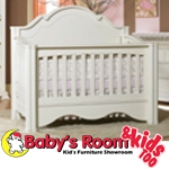National Poison Prevention Week
Baby’s Room & Kids Too
National Poison Prevention Week, sponsored by the Poison Prevention Week Council, has been held each year during the third week in March since 1961. Its purpose is to educate the public about the dangers of poisonings and how to prevent them.
According to Safe Storage, Safe Dosing, Safe Kids, a report published by Safe Kids Worldwide, more than 60,000 young children end up in emergency departments every year because they got into medicines while their parent or caregiver was not looking. More than half are under age 6.
That’s about 165 young kids every day or roughly four school busloads, and every single one of those trips to the ER could have been prevented.
Another disturbing statistic as that, while the death rate among children from other forms of poisoning has been cut in half since the late 1970s, medication deaths as a percentage of all child poisoning deaths have nearly doubled.
The American Academy of Pediatrics says that most poisonings occur when parents or caregivers are home but not paying attention. The most dangerous potential poisons are medicines, cleaning products, antifreeze, windshield wiper fluid, pesticides, furniture polish, gasoline, kerosene and lamp oil.
They warn:
- Be especially vigilant when there is a change in routine.
- Holidays, visits to and from grandparents’ homes, and other special events may bring greater risk of poisoning if the usual safeguards are defeated or not in place.
- Always store medicine, cleaners, paints/varnishes and pesticides in their original packaging in locked cabinets or containers, out of sight and reach of children.
- Install a safety latch that locks when you close the door on child-accessible cabinets containing harmful products.
- Never place poisonous products in food or drink containers.
- Keep coal, wood or kerosene stoves in safe working order.
- Maintain working smoke and carbon monoxide detectors.
- Secure remote controls, key fobs, greeting cards, and musical children’s books. These and other devices may contain small button-cell batteries that can cause injury if ingested.
Different types and methods of poisoning require different, immediate treatment. Here are the AAP’s guidelines:
- If your child has come in contact with poison or you suspect that your child may have swallowed a button-cell battery, and has mild or no symptoms, call your poison control center at 1-800-222-1222.
- If your child has swallowed poison, remove the item from the child, and have the child spit out any remaining substance. Do not make your child vomit and do not use syrup of ipecac.
- For skin poison, remove the child’s clothes and rinse the skin with lukewarm water for at least 15 minutes.
- For eye poison, flush the child’s eye by holding the eyelid open and pouring a steady stream of room temperature water into the inner corner for 15 minutes.
- For poisonous fumes, take the child outside or into fresh air immediately. If the child has stopped breathing, start cardiopulmonary resuscitation (CPR). Do not stop until the child breathes on his or her own, or until someone can take over.
- If your child is unconscious, not breathing, or having convulsions or seizures due to poison contact or ingestion, call 911 or your local emergency number immediately.
The Up and Away and Out of Sight educational program, led by the CDC and a coalition of partners as part of the PROTECT Initiative, offers these additional tips about dealing with medications around children:
- Purchase all medicines in containers with safety caps. Discard unused medication.
- Keep all child-resistant caps on medication bottles and close them tightly after each use.
- Store medications in a safe location out of sight and reach of young children, even if another dose needs to be given in a few hours.
- Never refer to medicine as “candy” or another appealing name.
- Ask guests to keep coats, purses and bags that have medications up and out of reach and sight when they are in your home.
- Always read labeling instructions and use the dosing device that comes with the medication.
- Check the label each time you give a child medicine to ensure the proper dosage.
- Never use kitchen utensils to dispense medication as they are not accurate measurements and introduce potential for confusion between units of measure (e.g. teaspoons for tablespoons).
- Program the Poison Help number (1-800-222-1222) into your home and cell phones, so you will have easy access to their local poison control center if a child has had an unsafe exposure.
- Call 911 if a child is in acute medical distress, especially if they are unconscious, seizing or not breathing.
Sources:
- American Academy of Pediatrics
- Poison Prevention Week Council
- The PROTECT Initiative
- Safe Storage, Safe Dosing, Safe Kids
- Up and Away and Out of Sight
Baby’s Room & Kids Too


